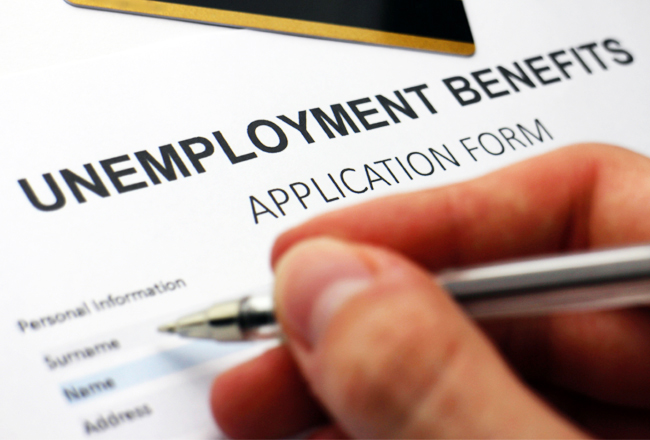Unemployment rate hits 12.4%; TD Bank reports find mixed signals in data
In the week ending April 25, 3,839,000 Americans filed new unemployment insurance claims, according to seasonally adjusted figures released this morning by the U.S. Department of Labor. That was a decrease of 603,000 from the previous week’s revised level.
 The Labor Department also calculated that the country’s unemployment rate for the week ending April 18 hit 12.4%, an increase of 1.5% from the previous week. It marks another record rate for seasonally adjusted insured unemployment since the Labor Department began tracking the number.
The Labor Department also calculated that the country’s unemployment rate for the week ending April 18 hit 12.4%, an increase of 1.5% from the previous week. It marks another record rate for seasonally adjusted insured unemployment since the Labor Department began tracking the number.
In New York, 218,912 people filed new claims in the week ended April 25, an increase of 12,728 over the previous week.
Connecticut saw a sharp drop in new claims for the week ending April 25. The total was 33,037, a decrease of 69,771 from the 102,808 claims filed for the week that ended April 18.
The Labor Department looked back at the week ending April 11 and calculated that the highest insured unemployment rates were in Michigan (21.8%), Vermont (21.2%), Connecticut (18.5%), Pennsylvania (18.5%), Nevada (16.8%), Rhode Island (16.%7), Washington (16.0%), Alaska (15.6%), New York (14.4%), and West Virginia (14.4%).
The largest increases in initial claims for the week ending April 18 were in Florida (up 326,251), Connecticut (up 68,758), West Virginia (up 31,811), Louisiana (up 12,270), and Texas (up 6,504).
The largest decreases for the week ending April 18 were in New York (down 189,517), California (down 127,112), Michigan (down 85,500), Georgia (down 72,578), and Washington state (down 60,980).
In a statement, U.S. Labor Secretary Eugene Scalia said, “All 50 states are now delivering the $600 additional weekly unemployment benefit provided by the CARES Act. The department has disbursed more than three-quarters of a billion dollars to states to help them deliver this relief as quickly as possible.”
Scalia said that as workplaces reopen, safety will be key in the transitioning process and he again touted the Occupational Safety and Health Administration as being “at the forefront of workplace safety since January, delivering important resources and guidance to businesses to help them keep workers safe, and investigating and responding to worker complaints.”
Meanwhile, commentary on the newly released Labor Department statistics came this morning from TD Bank. It pointed out that the approximately 3.9 million new unemployment insurance claims for the week ending April 25 were slightly higher than market expectations, which had been for only 3.5 million new claims. It noted that continuing claims rose to 17.9 million, an increase of 2.2 million for the week ending April 18, and that the insured unemployment rate of 12.4% was up from 10.9% the week prior.
TD Bank’s analysis characterized the number of Americans filing for unemployment benefits as “still at levels previously unthinkable, but at least it is on a downward trajectory. A downward turn in some of the worst hit states is a positive signal that the worst in terms of losses is behind us.”
The bank said that the official unemployment rate to be reported next week likely will be well into the double digits. “How high it gets will depend not only on the number of jobs lost, but also on how many people have left the labor force for lack of opportunity during the crisis,” said James Marple, a senior economist at TD Bank.
Sri Thanabalasingam, another senior economist at TD Bank, was credited with an analysis of income and spending data for March that was released today.
It found that personal income fell by 1.7% for the month with spending falling 7.5% for the month. The numbers managed to produce something usually thought of as quite positive during normal times. With spending falling more than income, the personal saving rate increased to 13.1% from 8% in February, the highest savings rate since the 1980s.
Spending on goods contracted by 2.2% in March, according to the TD Bank analysis, owing to a 14.8% collapse in durable goods purchases. Spending on nondurable goods rose by 4.3% as consumers spent heavily on food and beverage.
Spending on services, which makes up over two-thirds of overall spending, fell by 9.5%. The main driver of the decline was spending on health care, which includes physician and dental services. Spending also declined in food, accommodations and recreation services.
TD Bank said the decline in consumption was not a surprise but that it is still shocking to see the magnitude of the early impacts of COVID-19 since states only started to enact social distancing protocols in mid-March.
The incoming April decline will be far worse as large parts of the economy were shuttered for the entire month, the TD analysis stated.
“COVID-19 is having a disastrous impact on the backbone of the American economy. Any hope for recovery will depend on households being in a position to rebound quickly. The expanded benefits in the Coronavirus Aid, Relief, and Economic Security (CARES) Act and the Payroll Protection Program will help, but it is clear that significant segments of the population are hurting,” the analysis stated.
“As states consider plans to open up economies, it could alleviate some of the pressure on income and spending. However, the economic recovery will be gradual as social distancing measures, in some form, will likely still be in place for many months to come.”